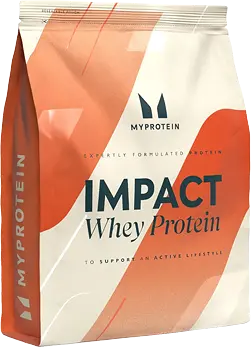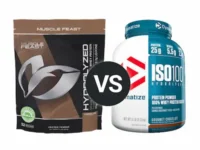Knowledge BaseYou're Questions Answered
Can you mix whey protein powder with milk?
Mixing whey protein powder with milk is a common and popular choice for many individuals looking to enhance the nutritional content and taste of their protein shakes. While water is a lower-calorie option, milk offers additional benefits and considerations that can impact the effectiveness, taste, and texture of the shake. Below, we explore the benefits and drawbacks of mixing whey protein powder with milk.
Benefits of Mixing Whey Protein Powder with Milk
1. Enhanced Nutritional Profile:
Milk adds extra protein, vitamins, and minerals to the shake. A typical cup of milk contains about 8 grams of protein, as well as calcium, vitamin D, and other essential nutrients. This makes the shake more nutrient-dense, which can be beneficial for muscle recovery and overall health1.
2. Increased Caloric Intake:
For those looking to gain muscle mass or require additional calories, mixing whey protein powder with milk can help increase caloric intake. Whole milk, in particular, adds more calories and fat, which can be useful for individuals with high energy requirements2.
3. Improved Taste and Texture:
Milk typically provides a creamier texture and richer taste compared to water. This can make the shake more enjoyable and palatable, encouraging consistent consumption. The natural sugars in milk, such as lactose, can also add a slight sweetness, enhancing the overall flavor of the shake3.
4. Slower Digestion and Sustained Release:
Milk contains casein protein, which digests more slowly than whey protein. Mixing whey with milk can provide both a fast-absorbing protein source (whey) and a slower-digesting one (casein), offering a sustained release of amino acids over time. This can be beneficial for muscle recovery and reducing muscle protein breakdown4.
Drawbacks of Mixing Whey Protein Powder with Milk
1. Increased Caloric and Fat Intake:
While additional calories can be beneficial for some, they may be a drawback for those looking to manage their weight or reduce calorie intake. Milk, especially whole milk, adds extra calories and fats to the shake, which could hinder weight loss efforts if not accounted for in the overall diet5.
2. Lactose Intolerance:
Individuals who are lactose intolerant may experience digestive discomfort, such as bloating, gas, or diarrhea, when consuming milk. In such cases, lactose-free milk or plant-based alternatives like almond or soy milk can be used as substitutes6.
3. Effectiveness for Fasted Workouts:
For those who prefer fasted workouts, consuming whey protein with water may be more beneficial as it is quickly absorbed and does not add significant calories or slow down digestion. Milk, with its casein content, slows the digestion process, which might not be ideal for those seeking immediate protein delivery7.
4. Mixability:
While milk generally mixes well with whey protein powder, it may sometimes result in a thicker consistency. Some individuals may find this texture too heavy, especially if they prefer a lighter shake. Adjusting the ratio of milk to powder can help achieve the desired consistency.
- Phillips, S. M., & Van Loon, L. J. C. (2011). Dietary protein for athletes: From requirements to optimum adaptation. Journal of Sports Sciences, 29(sup1), S29-S38.
- Morton, R. W., Murphy, K. T., McKellar, S. R., Schoenfeld, B. J., Henselmans, M., Helms, E., ... & Phillips, S. M. (2018). A systematic review, meta-analysis and meta-regression of the effect of protein supplementation on resistance training-induced gains in muscle mass and strength in healthy adults. British Journal of Sports Medicine, 52(6), 376-384.
- Volek, J. S., & Mccaw, D. (1998). Effects of carbohydrate restriction and high-intensity resistance training on the thermogenic responses to subsequent carbohydrate feeding. Journal of the American College of Nutrition, 17(1), 5-11.
- Boirie, Y., Dangin, M., Gachon, P., Vasson, M. P., Maubois, J. L., & Beaufrère, B. (1997). Slow and fast dietary proteins differently modulate postprandial protein accretion. Proceedings of the National Academy of Sciences, 94(26), 14930-14935.
- Trumbo, P., Schlicker, S., Yates, A. A., & Poos, M. (2002). Dietary reference intakes for energy, carbohydrate, fiber, fat, fatty acids, cholesterol, protein, and amino acids. Journal of the American Dietetic Association, 102(11), 1621-1630.
- Heyman, M. B. (2006). Lactose intolerance in infants, children, and adolescents. Pediatrics, 118(3), 1279-1286.
- Burke, L. M., & Deakin, V. (2015). Clinical Sports Nutrition. McGraw-Hill Education.
Related Questions

Your Answer
We are a participant in the Amazon Services LLC Associates Program, an affiliate advertising program designed to provide a means for us to earn fees by linking to Amazon.com and affiliated sites.






